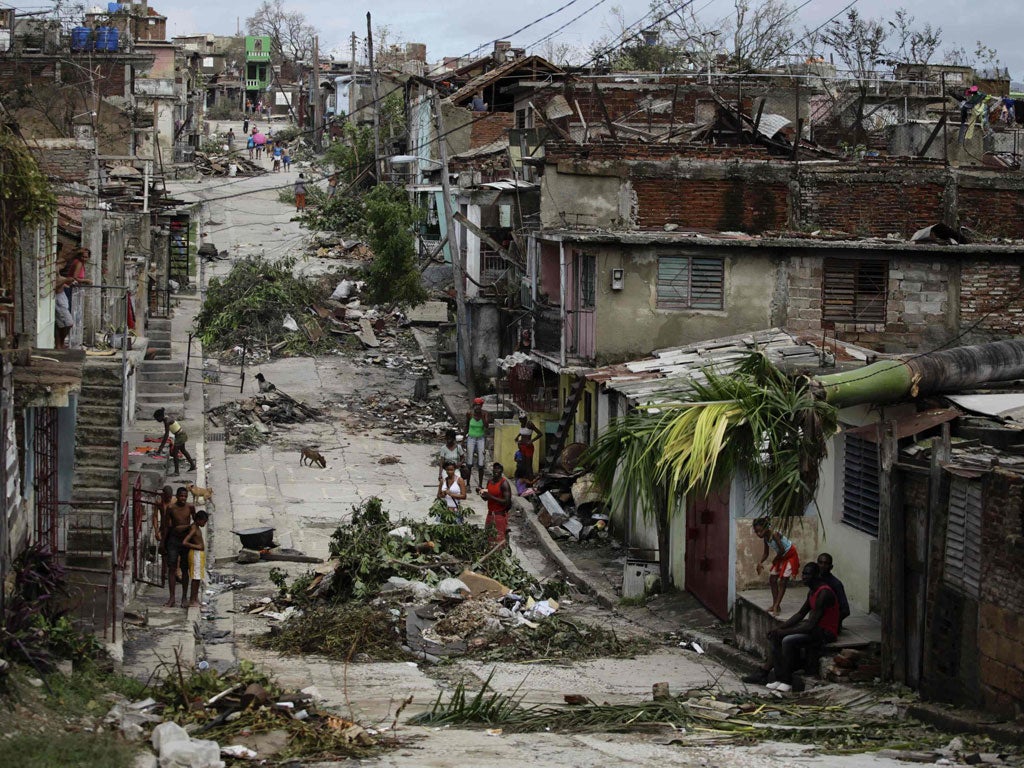
Your support helps us to tell the story
From reproductive rights to climate change to Big Tech, The Independent is on the ground when the story is developing. Whether it's investigating the financials of Elon Musk's pro-Trump PAC or producing our latest documentary, 'The A Word', which shines a light on the American women fighting for reproductive rights, we know how important it is to parse out the facts from the messaging.
At such a critical moment in US history, we need reporters on the ground. Your donation allows us to keep sending journalists to speak to both sides of the story.
The Independent is trusted by Americans across the entire political spectrum. And unlike many other quality news outlets, we choose not to lock Americans out of our reporting and analysis with paywalls. We believe quality journalism should be available to everyone, paid for by those who can afford it.
Your support makes all the difference.This is how the city of Santiago de Cuba looked yesterday after a pummelling from Hurricane Sandy. At least 41 people were killed as the storm system swept through the Caribbean; 11 of them in Cuba and most of those were in this 498-year-old city. There was no power or water supplies for its half a million inhabitants, but, at first light, truck convoys rolled into the city bringing equipment and utility workers from the rest of the country to help restore services.
Sandy is now headed towards the north-east coast of the United States, where weather forecasters fear it will combine with an early winter depression and so form a "super-storm". This would bring severe rains, winds and perhaps even snow to a wide swathe of the US. The present projected track predicts landfall late on Monday or early Tuesday, somewhere between North Carolina and southern New England.
Sandy is continuing to grow, and by early next week it could be packing tropical-force winds extending 450 miles from its centre. Storm warnings are in effect north from Florida, and New York is considering suspending public transport for fear of accidents once the storm hits.
Join our commenting forum
Join thought-provoking conversations, follow other Independent readers and see their replies
Comments